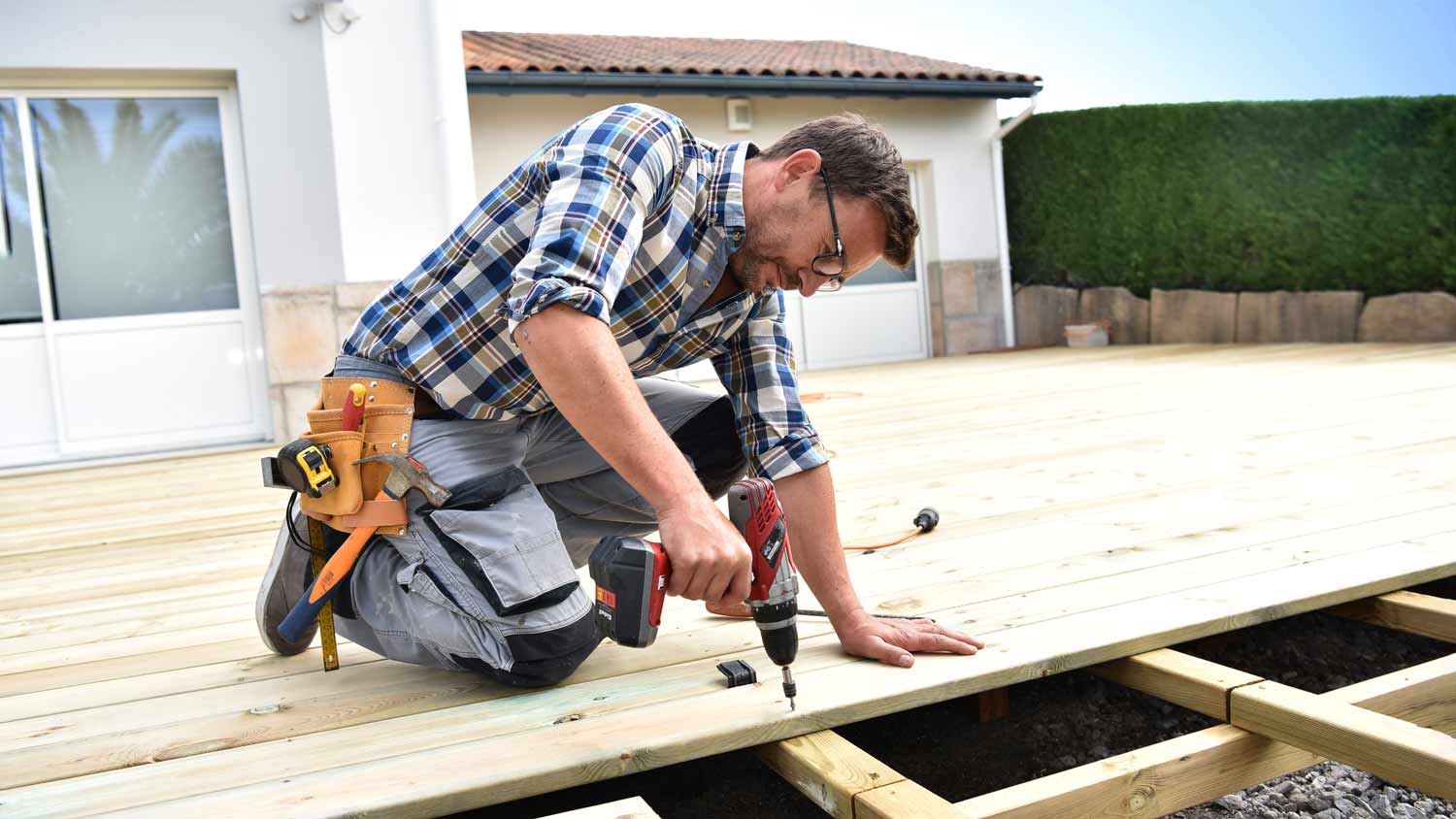
Vinyl is a durable and relatively inexpensive choice of decking material. Your vinyl deck cost will depend on labor, the deck size, and more.
Everything you need to build your dream deck


A deck provides a comfortable outdoor space where you can lounge, play, work, or entertain friends in the warmer months. If you’re planning to build a deck, you need to know what kinds of materials go into this project. This deck building materials list gives you the rundown on what you’ll need to build the deck of your dreams.
Before you start researching how to build a deck and begin the project, you’ll need to check that you have the correct materials. Here’s what you’ll need to get started:
Structural-grade lumber: posts, rim joists and beams, and deck boards
Ready-mix concrete
Concrete tube forms
Concrete bolts
Galvanized structural deck screws or nails
Exterior wood screws
Decking
Railings
Learn more about the importance of each of these materials to your deck-building project before you call a local deck-building pro for a project quote.
Lumber will comprise the deck’s foundation, frame, and stairs, making it one of the most crucial materials for this project.
The foundation is comprised of piers and footings set into concrete (more on that below) to ensure strength and stability. The frame is composed of a ledger that attaches to the house, rim joists that connect the frame and flooring, inner joists that support the deck boards, a supportive beam and posts, and stringers that support the deck stairs. All of these elements are made from lumber.
You can also use composite or PVC decking materials as an alternative to lumber. These materials are resistant to rot and insect damage, making them a low-maintenance choice. However, composite decking materials are often much more expensive than wood.
Concrete helps secure your deck to the ground and contributes to its structural stability. After you have cut the supportive posts to size, it’s time to set the posts in sturdy concrete. The amount you’ll need depends on the size of the concrete tube you’re using for the post bases. Here’s how many 80-pound bags of concrete you’ll need for different concrete tube diameters.
For 8-inch tubes, use 0.53 bags per foot.
For 10-inch tubes, use 0.8 bags per foot.
For 12-inch tubes, use 1.2 bags per foot
For 14-inch tubes, use 1.6 bags per foot.

You’ll need fasteners like bolts, screws, and nails to attach the different parts of your deck for safety and security.
Concrete bolts secure the deck posts to the concrete bases, ensuring the deck remains stable and sturdy. Galvanized structural deck screws or nails are used to form the deck foundation—you’ll use them to attach the rim joists to the deck posts and the inner joists to the frame.
The decking refers to the boards that make up the deck’s surface. The amount of decking you need depends on the desired size of your deck. First, measure your deck’s width, then divide it by the width of the decking board. For example, a 12-foot-wide deck measures 144 inches in width. If you use 5 ½-inch-wide boards, you’ll need around 26 deck boards.
Building codes generally require railings if your deck is 30 inches or more above ground level, though many people add railings to shorter decks for aesthetic and safety purposes. The railings must be at least 36 inches (three feet) high, with no more than four inches between spindles or between the bottom of the railing and the deck floor.
From average costs to expert advice, get all the answers you need to get your job done.

Vinyl is a durable and relatively inexpensive choice of decking material. Your vinyl deck cost will depend on labor, the deck size, and more.

Refinishing your deck is a great way to restore its appearance and fall in love with your outdoor space. Use this guide to learn how much it costs based on factors like size and type.

Trex decking can offer your home a beautiful, durable outdoor oasis. Learn all about the costs of Trex decking based on space, size, and style.

Are you wondering if a porch or deck is better for your home? Compare the pros and cons of these two outdoor favorites to help you find your best fit.

A pergola on deck upgrade can bring extra style and shade to your outdoor space. Find out how to build a pergola on a deck.

Deck railings keep you safe and give your deck a finished look. Here’s how to install railing posts on a deck to support strong and sturdy railings.